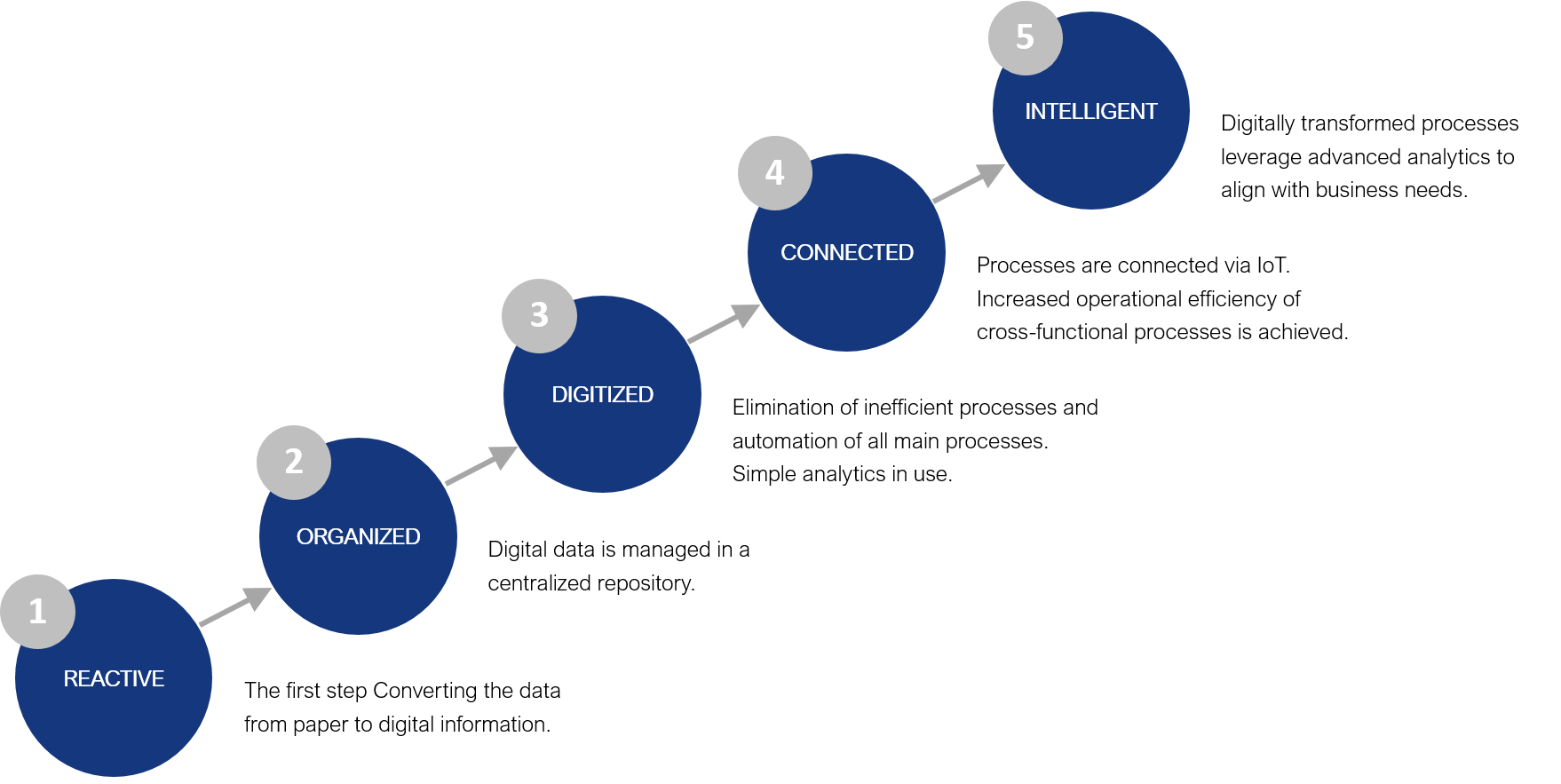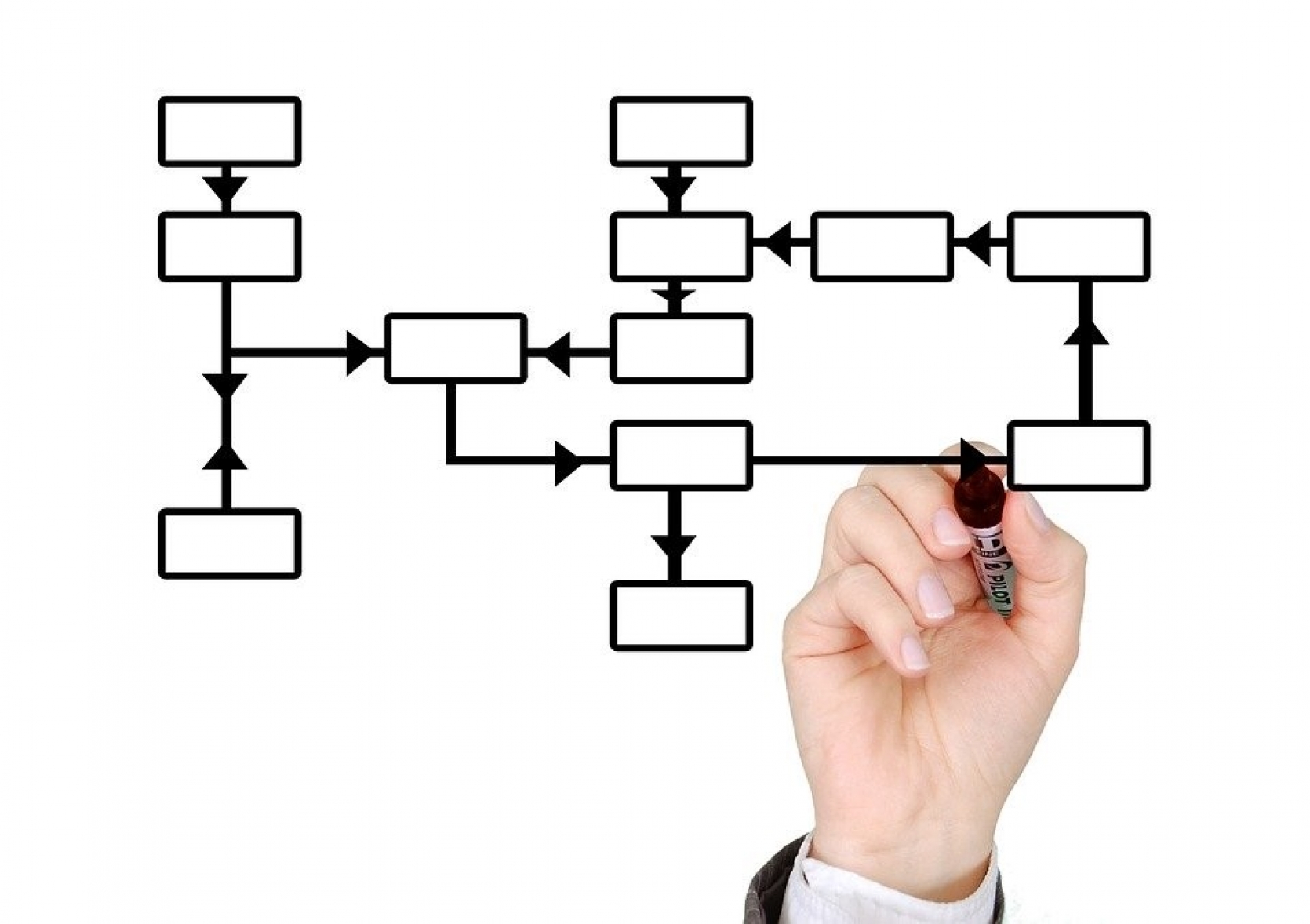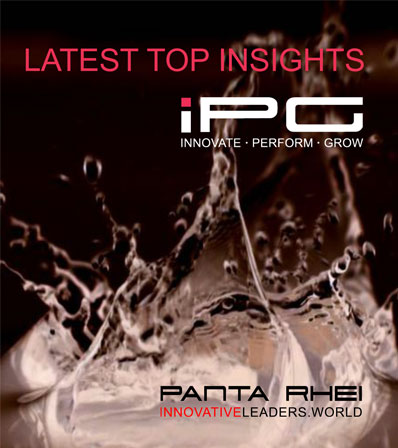In order to operate efficiently, organizations are enforced to adopt new patterns of business and to adequately apply innovative organizational solutions inherent to modern digital age.
Digital transformation should be considered as a long journey which makes an organization more adaptable to the requirements of a modern business.
One of the challenges inherent to digital transformation is how to adequately prepare both organizational structure and organizational processes that will support the transformation.
On the organizational processes side, digital transformation requires the modernization and simplification of the current business processes, as well as the creation of the new key processes. Crucial goals, which every organization tends to achieve with digital transformation, are closely related to processes, and can be reflected into an increase of operational efficiency, cost reduction and improvement of customer experience.
From the organizational structure point of view, that consequently means reducing the number of hierarchical levels, decentralization of decision making and greater collaboration among employees. As traditional bureaucratic organizational models are rigid, without the potential for further improvement in terms of new market conditions, it is obvious that new forms of organizational structure should be introduced.
Digital Transformation of Business Processes
On the road to digital transformation, business processes go through several different phases. Reviewed literature recognizes five phases of this transformation which can be observed in a graph below.

- Reactive – Processes are immature, data is inconsistent and paper and spreadsheets usage is prevalent. Company reacts to an event and projects are often carried out manually. This step is about converting the data from paper to digital information.
- Organized – Previously converted data gets clustered to belonging categories in a centralized repository and organized so it is easily accessible when needed.
- Digitized – All standardized paper forms have been replaced with a smaller set of standardized electronic forms that can be submitted through company's intranet. Inefficient processes have been eliminated and all main processes are managed through technology and automated, so that they are faster, more efficient and can be measured with simple analytics.
- Connected – The processes are interconnected via IoT. All processes are streamlined and fully integrated across departments. Vast amounts of cross-departmental data is providing insights across the business. Digital data is integrated deeper into business models. Data is of higher quality but it is still incomplete.
- Intelligent – By the end of this phase, simplified processes will be easily adopted across the company, data will be complete and consistent, processes will be fully aligned with business needs, and the company will have the ability to include other people such as customers into the process. The digital ecosystem of the company extends into the consumer journey to deliver customized experiences for current and potential customers.
Organizational Structures that support Digital Transformation
Each organization, no matter the size, market, history, tradition, location, number of employees, number of products, number of customers, realizes that it needs to be more “digital” in a sense of agility, flexibility, responsiveness to changes in customers’ needs and expectations.
Four types of organizational structure which are prepared for digital transformation can be identified. They are presented in the illustration below.

Observed matrix is consisted of three axes:
- Digital maturity – The earlier a company is in its evolution, the more likely it is to need a bit of separation and autonomy for digital. The requisite skills are often distinct in digital, so when bringing in new talent such as data science experts, it is better to initially cluster them in a centralized group. More digitally mature companies, by contrast, generally have more integrated digital operations. Digital maturity of business processes is also lower in the first part of the matrix; it is in Reactive or Organized phase when the Opportunistic or Centralization model of the organizational structure is represented, while during the Decentralized and Fully Integrated structure, the maturity of the processes is in Digitized, Connected, or Intelligent phase. In other words, the further away we move from the Tactical to Fully Integrated Model, there is a higher maturity of the business processes as well.
- Digital openness to change – A relatively open culture can more easily pursue an integrated approach. Companies with a more resistant or slow culture will probably fare better with a separate unit for digital transformation or at least a central unit complementing the business units to ensure progress.
- Integration level – Showing the degree of integration that digital initiatives have within the organization.
Opportunistic Model
In the Opportunistic Model, digital technology and ways of working are used within one or a limited number of business units to achieve existing objectives.
The units in which digital technology is used are functionally separate, where a standalone digital unit is directly reporting to CEO, has dedicated digital competencies and products, and P&L responsibility.
The Opportunistic Model is extremely common in organizations that have expressed a desire to establish a digital market presence, but who have, so far, not articulated a coherent digital strategy.
Organizations that use this approach made significant investments in digital technology. The challenge is that investments are made in silos, without a view to changing the effectiveness of the entire businesses. Digital remains at the edge of the business and its challenges and opportunities are restricted to the minds of a few.
Centralization Model
In the Centralization Model, digital initiatives and skills are consolidated into a central unit. This enables appropriate governance over spend on digital. It also creates a structure for turning corporate strategy into priorities for digital initiatives with the central team being able to work with the business units to implement them.
This structure enables the organization to scan the market for ways to use digital, pollinate ideas and applications of digital between business units and deliver digital processes and technologies on behalf of the business. As with most centralized organizational approaches, it also tends to be more efficient. This centralization can also benefit organizations that are doing far too much in digital.
In general, the central digital team is a transient feature of the organization that helps it gain control of investments, breaks down silos and teaches and empowers leaders to use digital techniques to transform the organization.
In a small number of instances it could become the optimum model – for example where the role of the central team becomes a ‘Digital Centre of Excellence’ – but in the majority of instances, responsibility for digital should be broken up and passed to the business’s operational leaders.
Decentralization Model
In the Decentralization Model, digital strategy is in place and has been effectively communicated across the business.
A central digital team no longer holds all responsibility for digital, and emphasis is placed on sharing knowledge, educating and enabling others in the business. Dedicated digital roles are embedded in each business unit, in addition to a dedicated team coordinating activities across business units.
The most significant enabler of this model is deep understanding amongst leadership and employees of what digital really means.
In the Decentralization Model, shared capabilities such as data science, innovation and rapid prototyping enable the organization to be self-sufficient in digital techniques and ways of working without always relying on a central team. Leadership behaviors encourage ownership for outcomes to be devolved and allow people to have careers that see them continually learn and adapt.
Fully Integrated Model
In this model, digital culture, processes, business models and technology are no longer unusual, but are fully embedded in daily working life.
The business is flexible and responsive to change at all levels. There is no longer a need for a centralized function and those working on initiatives and with specific digital skills re-join business units. Teams form and disband dynamically based on business need. Business units lead the change and are individually responsible for digital topics. The business now behaves like a digital organization.
Conclusion
Digital transformation has a huge impact on organizational structure and organizational processes and represents much more than just automating or inserting technology into an existing process to optimize the current value chain. It is about going further, modifying the business model, changing the value chain and surely creating a new supply of products and services which lead to a new and better way to provide customer value.
Transformation is a long journey and there is no “one size fits all” organizational structure for it, the organization will change over time depending on its culture, digital maturity and key goals of transformation.
To learn more, please explore our digital transformation success cases under the “success stories” section of our website.

















